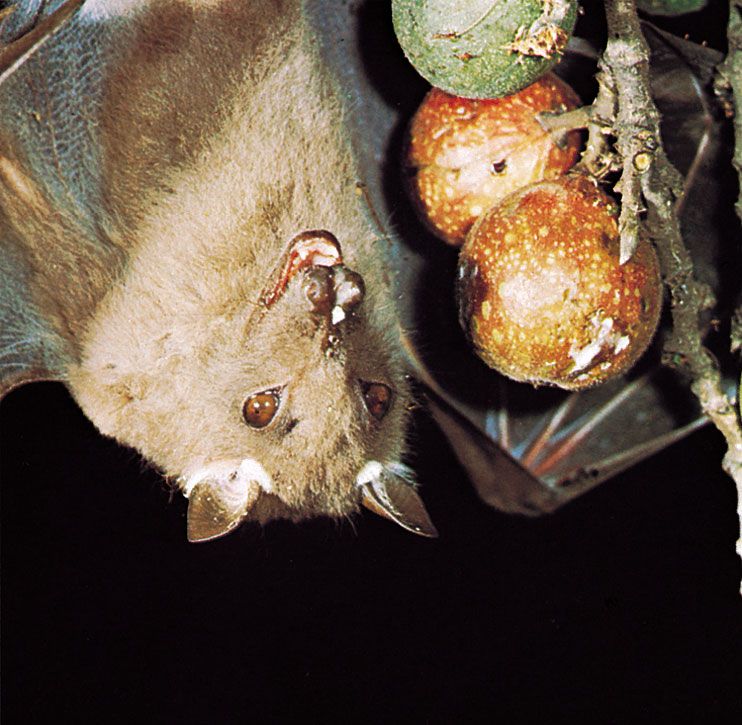
# Bats’ Neural Safety Net: A Masterclass in Adaptation
Much like a proficient pilot relying on instruments amidst zero visibility, bats have exhibited an astounding capacity to adapt rapidly when their primary navigation system is disrupted. Recent investigations by neuroscientists at Johns Hopkins have revealed an unknown neural safety net in the brains of bats that enables them to promptly and effectively compensate for disruptions in crucial auditory pathways. Featured in *Current Biology*, this pioneering discovery enhances our comprehension of bats’ extraordinary sensory mechanisms and holds promising implications for exploring brain plasticity across various species, including humans.
## Backup Systems: A New Chapter in Neurobiology
Bats depend on echolocation—a biological sonar system—for navigating their environment and finding prey. By emitting high-frequency sounds and interpreting the returning echoes, these mammals create intricate mental representations of their surroundings. However, up to this point, researchers assumed that particular midbrain auditory pathways were essential for this capability.
To evaluate this assumption, Johns Hopkins scientists devised a creative experiment. They temporarily inhibited a key auditory area in the bats’ brains and monitored their performance in a controlled navigation task. To their astonishment, rather than chaos unfolding, the bats adapted immediately. “They struggled but managed,” noted Cynthia F. Moss, the senior author of the study, expressing surprise at the efficiency of their innate safety net.
## How Bats Compensate
Trained to navigate through a narrow passage and locate a reward window, the bats encountered new difficulties when their auditory signal processing was affected. Nonetheless, rather than faltering in the task, each bat instinctively employed a variety of compensatory strategies to navigate effectively:
1. **Lower Flight Heights**: The bats adjusted their flying altitude, likely to remain closer to identifiable physical landmarks.
2. **Wall-Oriented Navigation**: Utilizing the walls as references, they upheld a sense of spatial orientation despite compromised sound processing.
3. **Increased Call Frequency and Duration**: The bats produced more frequent and extended sonar calls, effectively capturing more “snapshots” of their environment.
4. **Enhanced Call Bandwidths**: Operating across broader frequency ranges allowed them to collect more environmental information per call.
These adaptations occurred instantly, without any visible learning period—demonstrating the ingrained nature of their compensatory systems within their brains.
## Implications for Auditory Processing and Brain Plasticity
One of the most captivating discoveries from the study was that even with a vital auditory pathway in the midbrain disrupted, the bats retained partial hearing. This indicates the potential presence of previously unrecognized neural pathways or the activation of neural redundancy mechanisms. These findings challenge established notions regarding the linearity of auditory processing systems.
More generally, this research highlights the brain’s remarkable plasticity—the capacity to adapt and reconfigure itself in response to sensory challenges. While such adaptability is well documented in humans (for instance, blind individuals often experiencing heightened auditory or tactile processing), the speed and complexity of the bats’ compensatory responses are unparalleled.
## Potential Cross-Species Insights
The implications reach far beyond bats. This finding poses questions about whether similar backup mechanisms are present in other species, including humans. If so, understanding these systems could transform approaches to treating sensory deficits, brain injuries, and neurodegenerative diseases. For instance, leveraging hardwired backup systems could significantly enhance rehabilitation outcomes for patients who have lost particular sensory functions.
Bats’ resilience could also guide the creation of biomimetic technologies, potentially encouraging innovations in robotics or AI systems that must function in unpredictable environments.
## Redefining Success in Sensory Science
This research emphasizes the significance of examining non-human animals to reveal concealed elements of neural capabilities and brain functions. “Bats possess this incredible flexible adaptive behavior that they can utilize at any time,” said Moss, reflecting on their ability to improvise and flourish amidst challenges. The study not only offers fundamental insights into auditory processing but also paves the way for uncharted inquiries into the resilience of neural systems.
Much like a skilled pilot’s “instrument-only” landing in challenging conditions, bats’ capacity to pivot rapidly and efficiently in the absence of their usual sensory tools underscores an evolutionary ingenuity that science is just beginning to uncover.
—
### Glossary
**Echolocation**
A biological sonar mechanism where animals produce sounds and interpret the returning echoes to navigate and identify objects.
**Neural Plasticity**
The brain’s capability to alter, modify, and adapt in both structure and function in reaction to experiences or injuries.
**Auditory Pathway**
The pathway through which sound information is transmitted from the ear through the brain, involving various processing stations.
—
### Quiz
1. **What makes the bats’ adaptation strategy particularly remarkable?**
– The swiftness and effectiveness of their response, indicating an inherent rather than learned ability to adjust to sensory impairments.
2. **How did the bats modify their